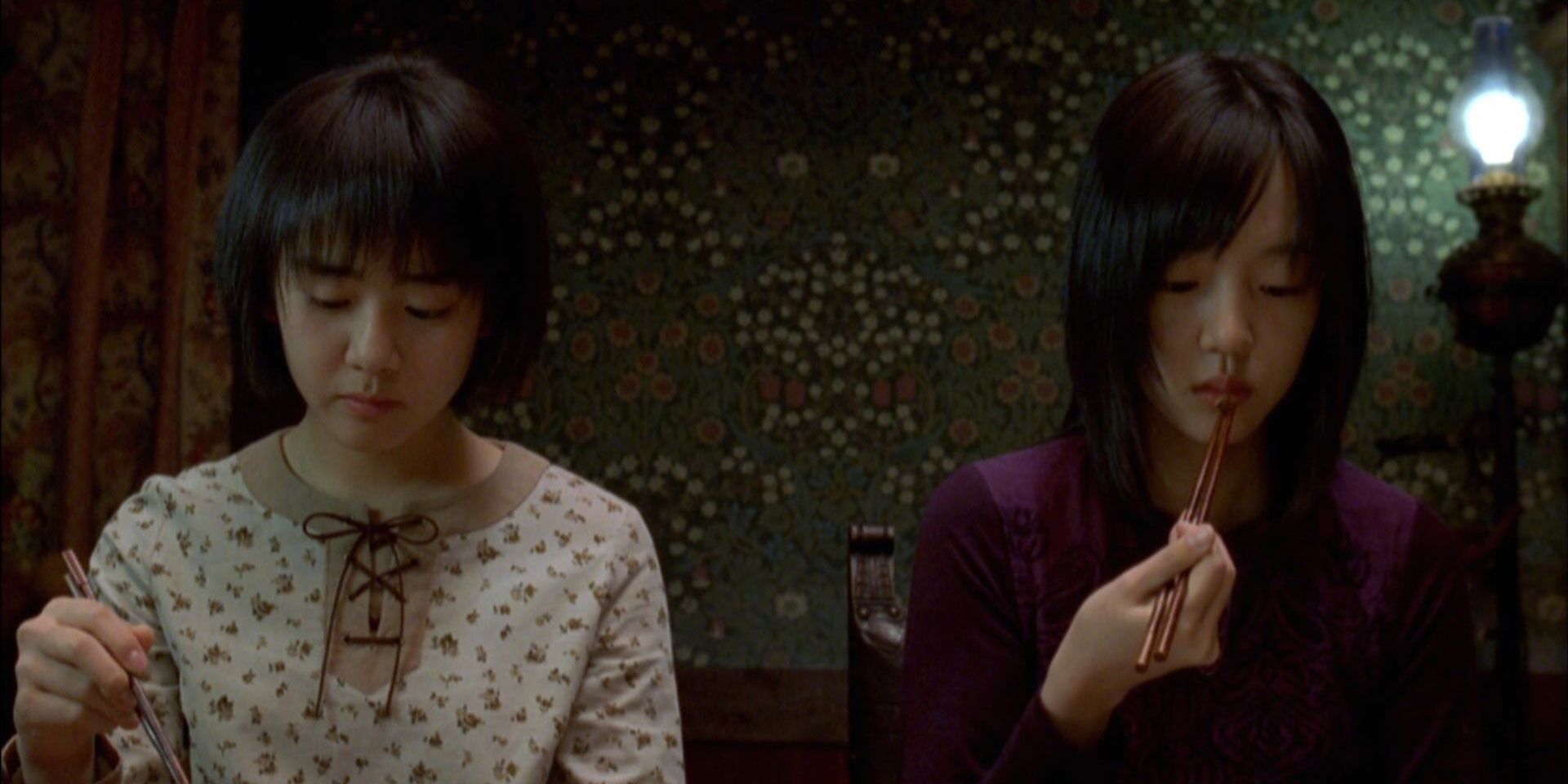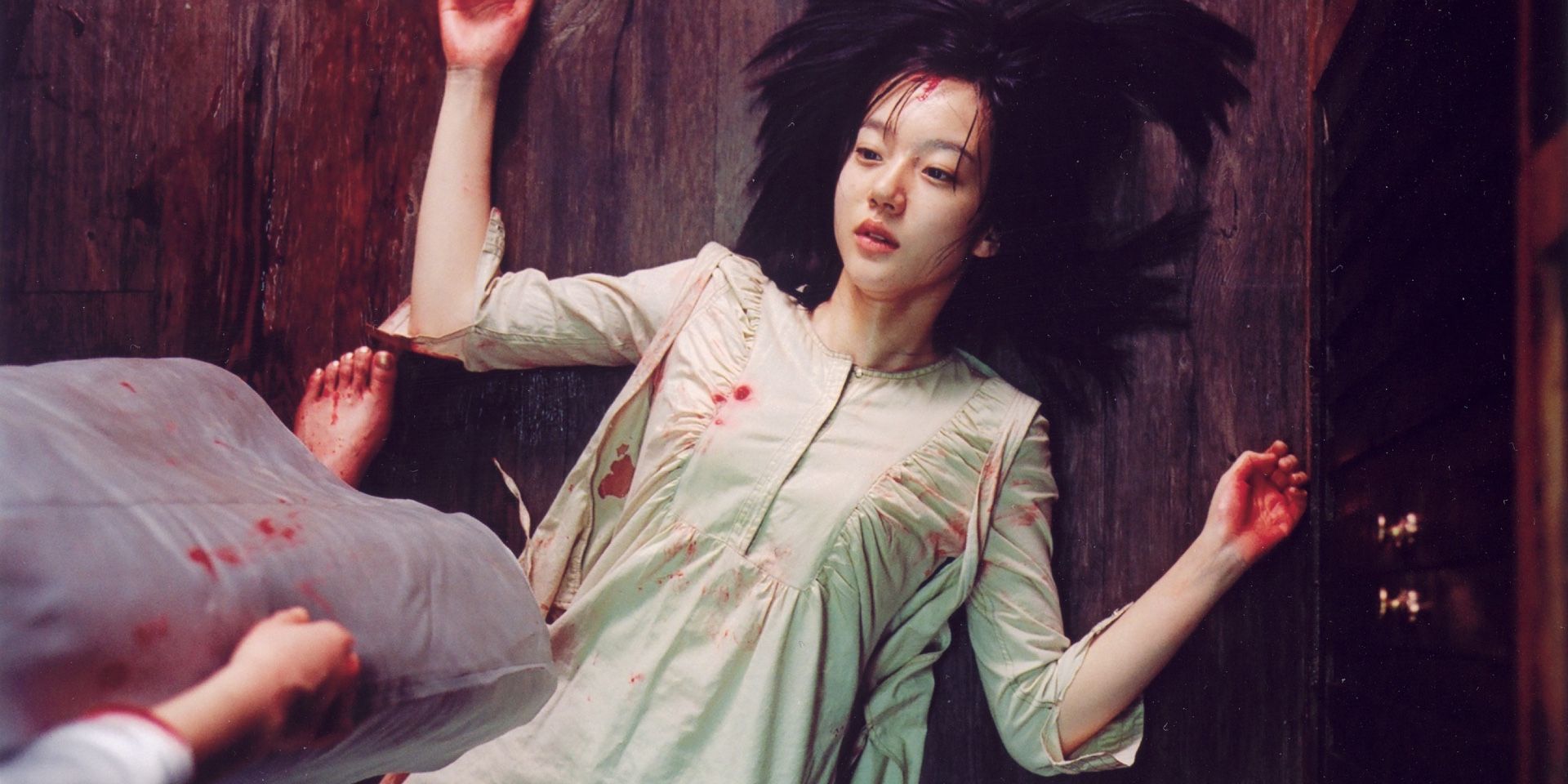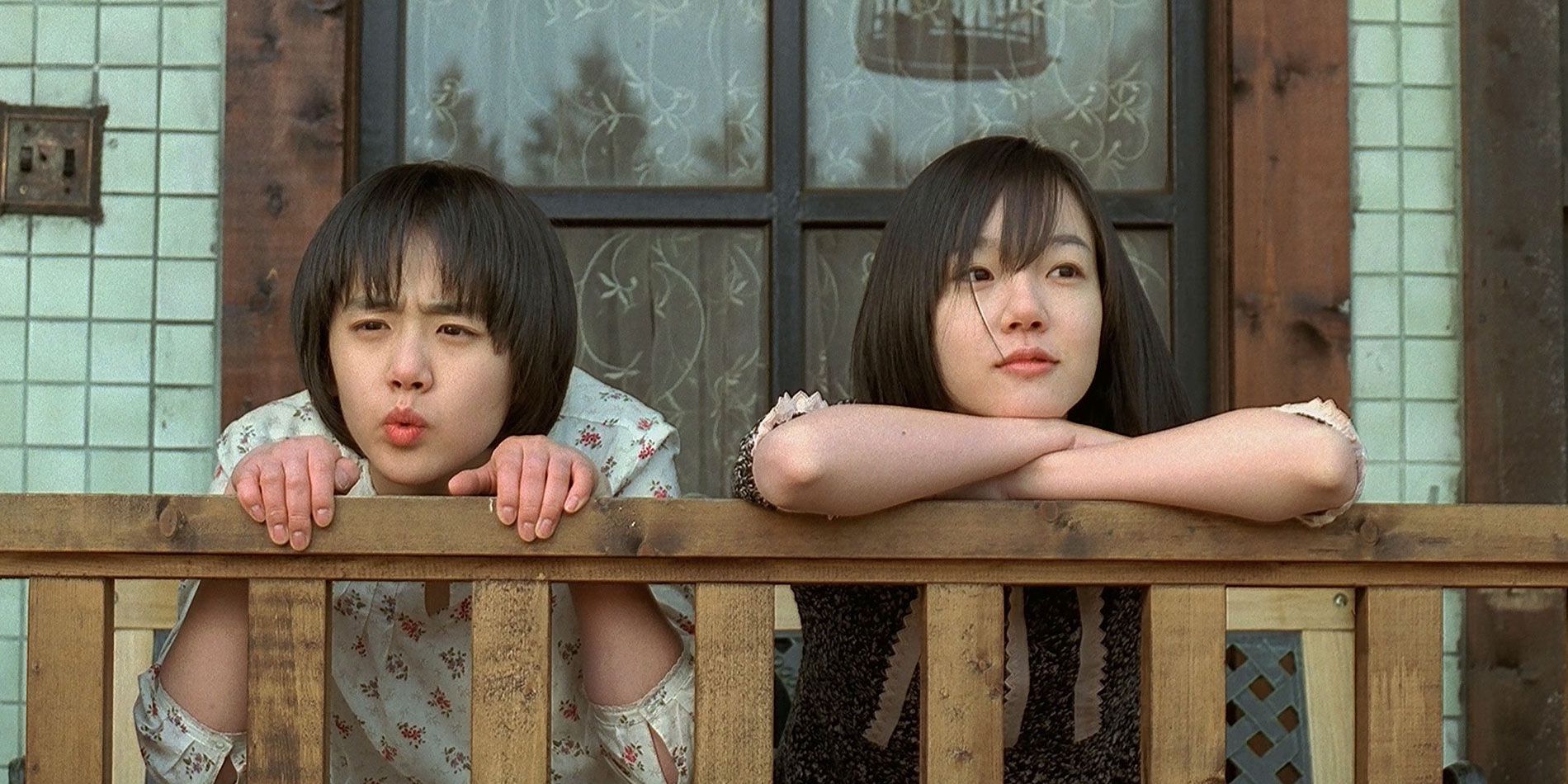Dialogue takes a back seat to the iconographic elements of horror films, thus creating the ability to frighten the global community regardless of the individual spoken languages. This transnational attraction can be tied to Kim Jee-Woon’s 2003 South Korean mystery horror A Tale of Two Sisters, which was a huge economic success in its country of origin and worldwide.
Not only was 2003 a significant year for Korean cinema (Oldboy, Memories of Murder), but A Tale of Two Sisters was groundbreaking for also bringing South Korean cinema to the world stage. It was the first Korean horror film to be screened in the United States and even spawned an American remake with The Uninvited (2009). A Tale of Two Sisters is an essential film in cinematic history and proves that horror is a universal language.
The story of A Tale of Two Sisters derives from the Joseon Dynasty, which dates back to the thirteenth century and the last five hundred years before the Korean Empire emerged in 1897. This tale tells the story of two dead sisters whose ghosts visit a town. The original fairytale has a happy ending, although the film does not.
The film begins with a close-up of a man washing his hands, although his hands are not dirty. He is not in a bathroom, but a dimmed-light room with a table and two chairs, seemingly awaiting an important meeting. Is this man a metaphor for feeling some sort of guilt, as he keeps trying to wash away something that the viewer cannot see? The audience is then introduced to a young girl, Su-mi (Im Soo-Jung), in obvious turmoil. She is in a hospital gown, and the man shows her a picture of her family: a father, mother, two daughters, and another woman on the side.
The film then cuts to a closeup of a house, and it is learned that Su-mi is returning from a mental institution. She arrives home with her father, Mu-hyeon (Kim Kap-Soo), stepmother Eun-joo (Yum Jung-ah) and younger sister, Su-yeon (Moon Geun-Young). As the film progresses, disturbing instances begin to occur: Eun-joo’s bird gets mutilated, Su-mi sees Eun-joo dragging a blood-filled sack, and she continually sees Eun-joo abusing Su-yeon.
Right away, the gothic presentation of the house is recognized by the international viewer as a typical generic element of horror. This recognized commonality makes the film very understandable to a transnational audience. The cinematography captures the magnificence of the Korean countryside with its lakefront setting and architectural beauty then contrasts this to the colors and brightness of the house. Once the camera leaves the outside and enters the house, the colors and lighting change from bright to dark. Even the wallpaper itself seems to possess an evil life of its own. Lee Byung-woo’s eerie score adds to the film’s overall atmosphere: melodic guitars and strings, sounding like a fairytale, yet its minor tones highlight a more depressing nature.
The story, although Korean, becomes transnational with its familiar Grimm's Fairy Tale’ characters and themes: wicked stepmother, child abuse, mental institution, haunted house, and the dead seeking retribution. The story’s folklore precedes the war that would split Korea into two countries, but the national adherence to the story supersedes any geopolitical events. Kim garnered from this story the national ancestral and historic themes it had carried for so long, then layered it with the fears and instability of the modern Korean family. By underlying this current unease with the Korean nuclear family and aligning it with the trepidation all families incur, the director adds another stratum of transnational identity.
In recent years, Americans have been obsessed with Korean cinema. Youn Yuh-Jung won best actress for her role in Minari, as well as Bong Joon-ho winning best picture for Parasite in 2020. This doesn’t mean that Korean cinema was only successful in recent years though, as A Tale of Two Sisters was one of the first, and is still considered to be one of South Korea’s greatest psychological horror films of all time. When interviewed about A Tale of Two Sisters, director Kim Jee-Woon stated, “I think a movie is at the borderline between the reality and some other world. For me, expressing the real world with the real language is not very fun. But, expressing the real world with fantastic, film language is more fun. I think that film is a door from the real world to the other world, to the other side…And ultimately, film is about digging from another world into what's going on in the reality."
This borderline of reality is highlighted when Su-mi keeps telling her father that their stepmother is abusing Su-yeon, and her father somehow keeps dismissing it. This makes the audience angry and confused, that is until her father finally announces the traumatic truth. Su-yeon is dead. It is now revealed that Su-mi has been suffering from dissociative identity disorder, and she and her father have been alone in the house the entire time. She embodied Eun-joo’s personality and imagined her sister was there when in reality, she’s been gone for the entirety of the film. Flashbacks are then shown disclosing the truth. The viewer can see Su-mi’s terminally ill mother hanging herself in the closet after finding out about Mu-hyeon and Eun-joo’s affair, as well as Su-yeon trying to save her but the closet door falling on her and suffocating her to death.
In the end, yes, A Tale of Two Sisters is a horror movie, but really, it is a story about grief. Just like horror is a universal language, so are death and suffering. The film is a ghost story at its surface but is also a heartbreaking study of a family torn apart by loss and grief.
The internet brings people together in an immediacy not attainable until very recently. Any exchange of cultural ideas and national events in faraway places is brought to our attention in real-time. With the onslaught of consistently expanding social media, the idea of national and transnational filmmaking begin to merge, and A Tale of Two Sisters is partly to for that.



